Fourth Street Viaduct (Crossing the LA River)
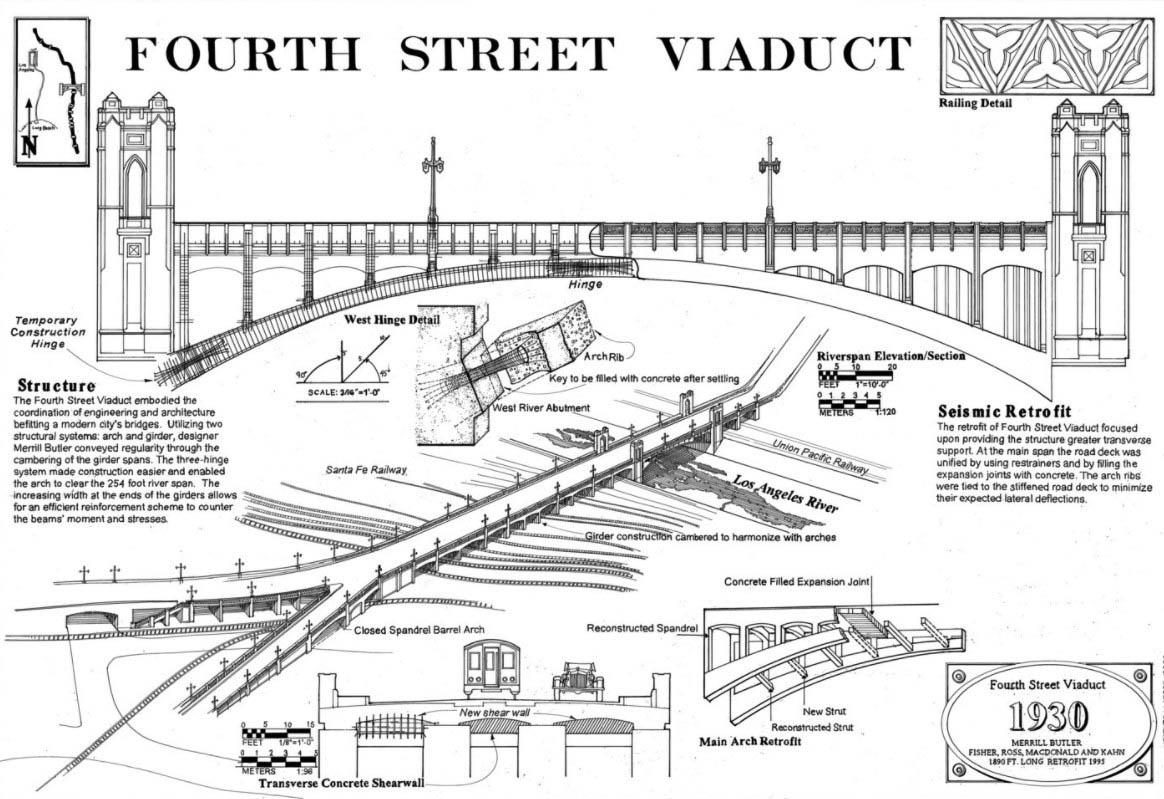 |
|
| (1930)* – Drawing of the Fourth Street Aqueduct designed by Merril Butler. |
Historical Notes Fourth Street Viaduct was one of several reinforced concrete bridges providing an elegant, sturdy crossing over the Los Angeles River and railroad tracks built by the City of Los Angeles beginning the late 1920s. Providing access between Boyle Heights and the downtown core, Fourth Street Viaduct replaced two viaducts, one for automotive traffic and one for the Los Angeles Railway. By eliminating the grade crossings at Mission Road and Santa Fe Avenue, the bridge allowed for easier communication between the area bifurcated by the river and train traffic along the Union Pacific and Atkinson Topeka & Santa Fe Railway. The construction of the 254-foot river span was aided by the use of temporary reinforced concrete hinges during its construction. The design of the bridge incorporated ornamental elements such as precast railings and cast aluminum lanterns. |
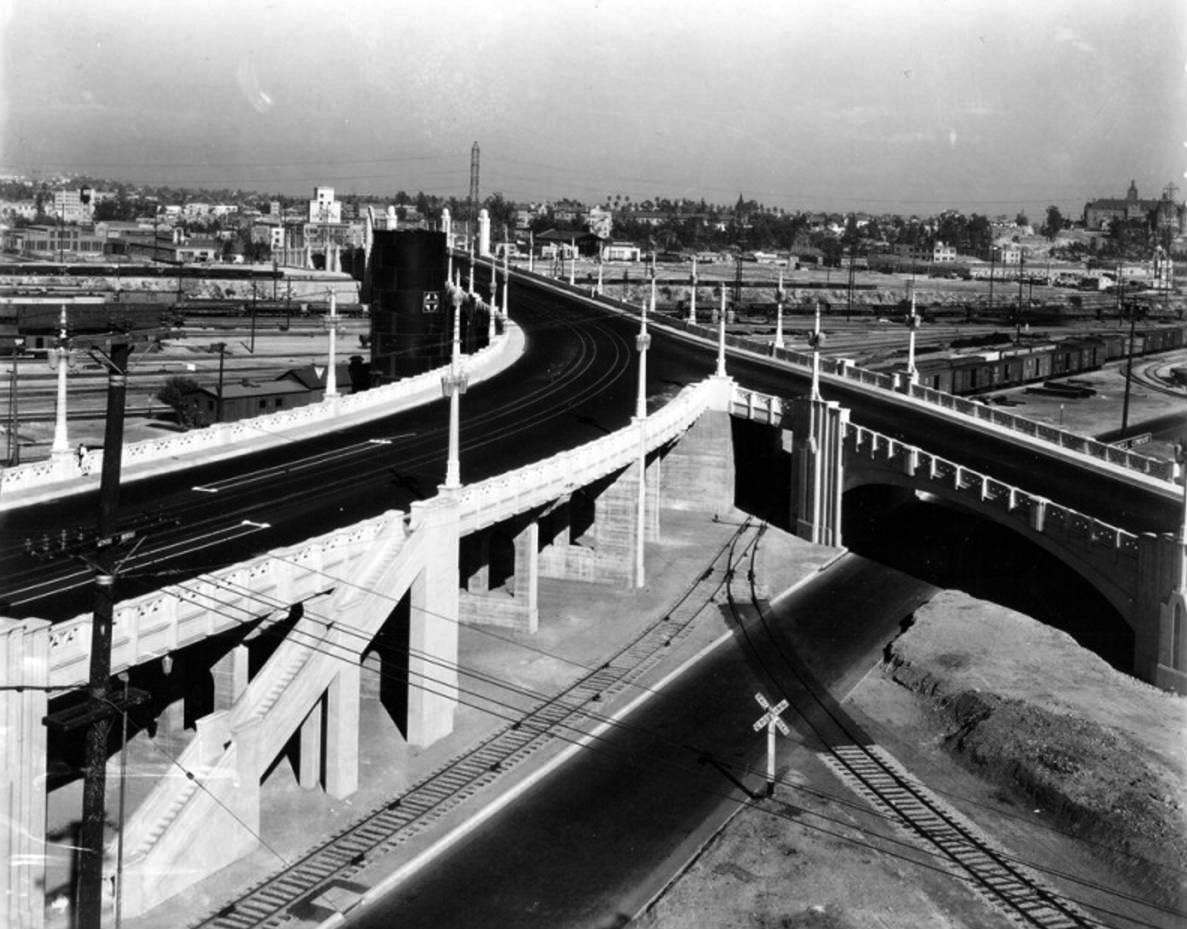 |
|
| (1930s)* - Two railroad lines converge and run under the Fourth St. Bridge. The bridge itself is seen with two parts converging into one. View is looking East. |
Historical Notes Built in 1931, the 4th Street Bridge replaced the last remaining wooden bridge over the LA River. It exhibits a range of architectural styles, from Beaux Arts in its four concrete towers to Gothic Revival in its porticos, lighting standards and railings. |
 |
|
| (2001)* – Aerial view looking west showing the Fourth Street Viaduct crossing both the LA River and the railroad yards. |
Historical Notes Bridge or Viaduct? A bridge is a small structure, built to avoid an obstacle (valley, river, etc.). A viaduct is generally a bigger structure, by its size, height or width and consists of a series of bridges connected to one another, typically appearing as a series of arches, spanning low ground such as a valley, river or wetland |
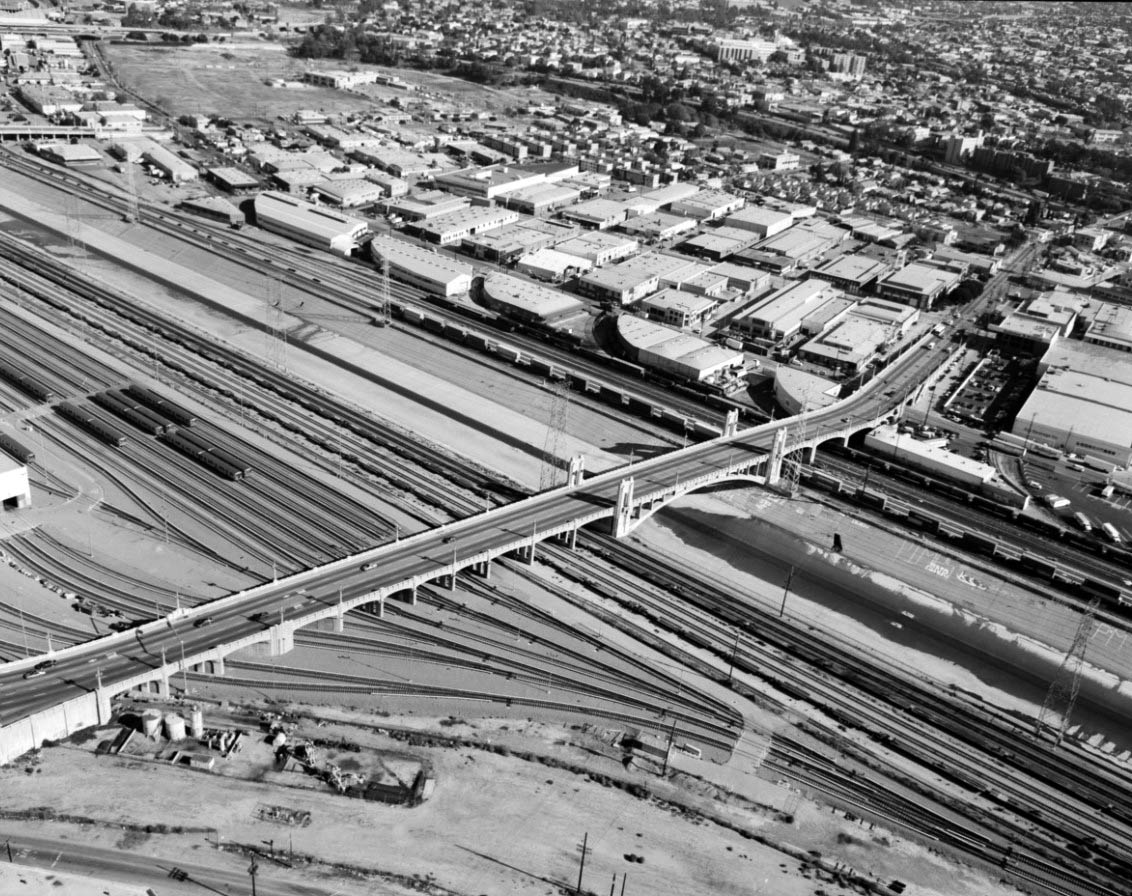 |
|
| (2001)* – Aerial view the Fourth Street Viaduct looking northeast. |
Historical Notes L.A.’s early 20th-century bridge-building spurt was made possible by the 1924 passage of the $2 million Viaduct Bond Act. The guiding hand behind the 4th Street Bridge and its companions was that of Merrill Butler, the city of Los Angeles’ bridge engineer from 1923 to 1961. The 4th Street Viaduct cost $2,264,000.00 in its day.* |
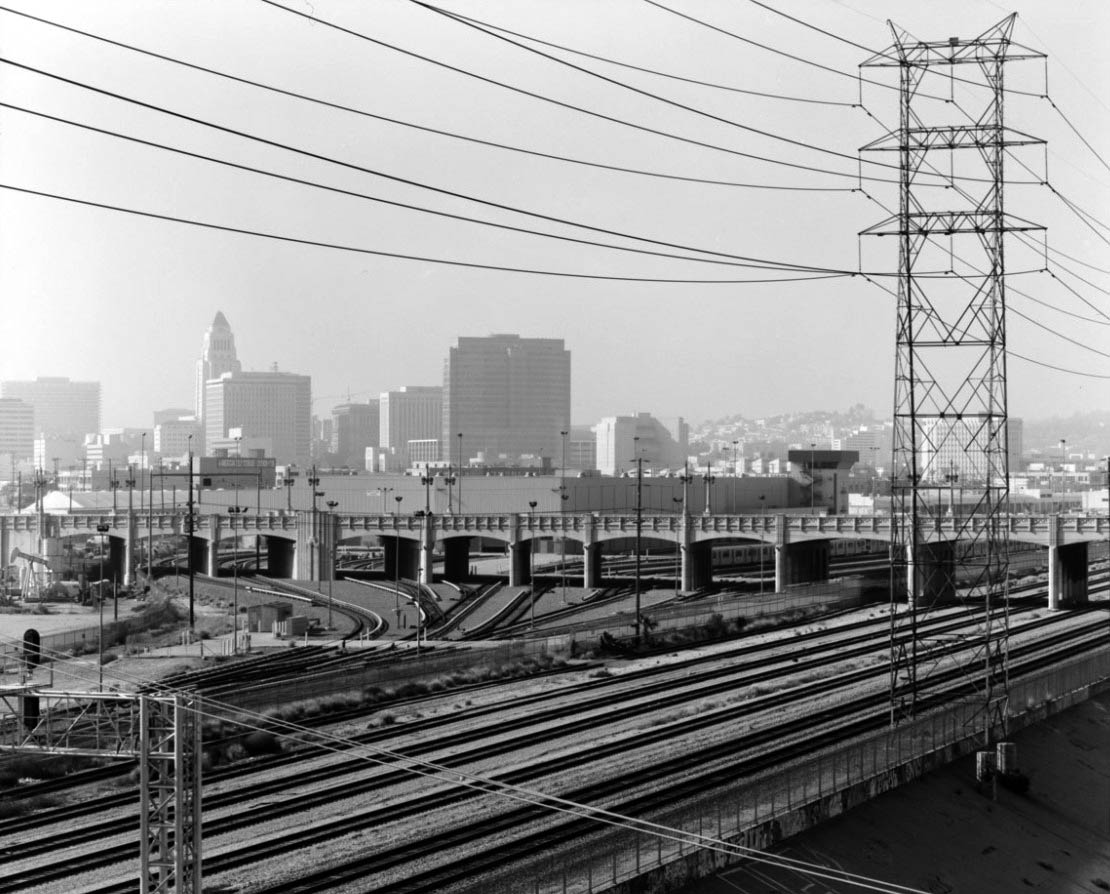 |
|
| (2001)* – View showing the east end of the Fourth Street Viaduct as it crosses the railroad tracks with downtown LA in the background. |
Historical Notes The large overhead transmission towers and wire were installed and operated by the LADWP. Click HERE to see more Early Power Transmission. |
 |
|
| (2001)* – Looking north toward the Fourth Street Viaduct as it crosses the LA River with the MTA Building seen in the distance. |
Historical Notes The Fourth Street Viaduct utilized two structural systems: arch and girder. Designer Merril Butler conveyed regularity through the cambering of the girder spans. The three-hinge system made construction easier and enabled the arch to clear the 254 river span. The increasing width at the ends of the girders allows for an efficient reinforcement scheme to counter the beams’ moment and stresses.^ |
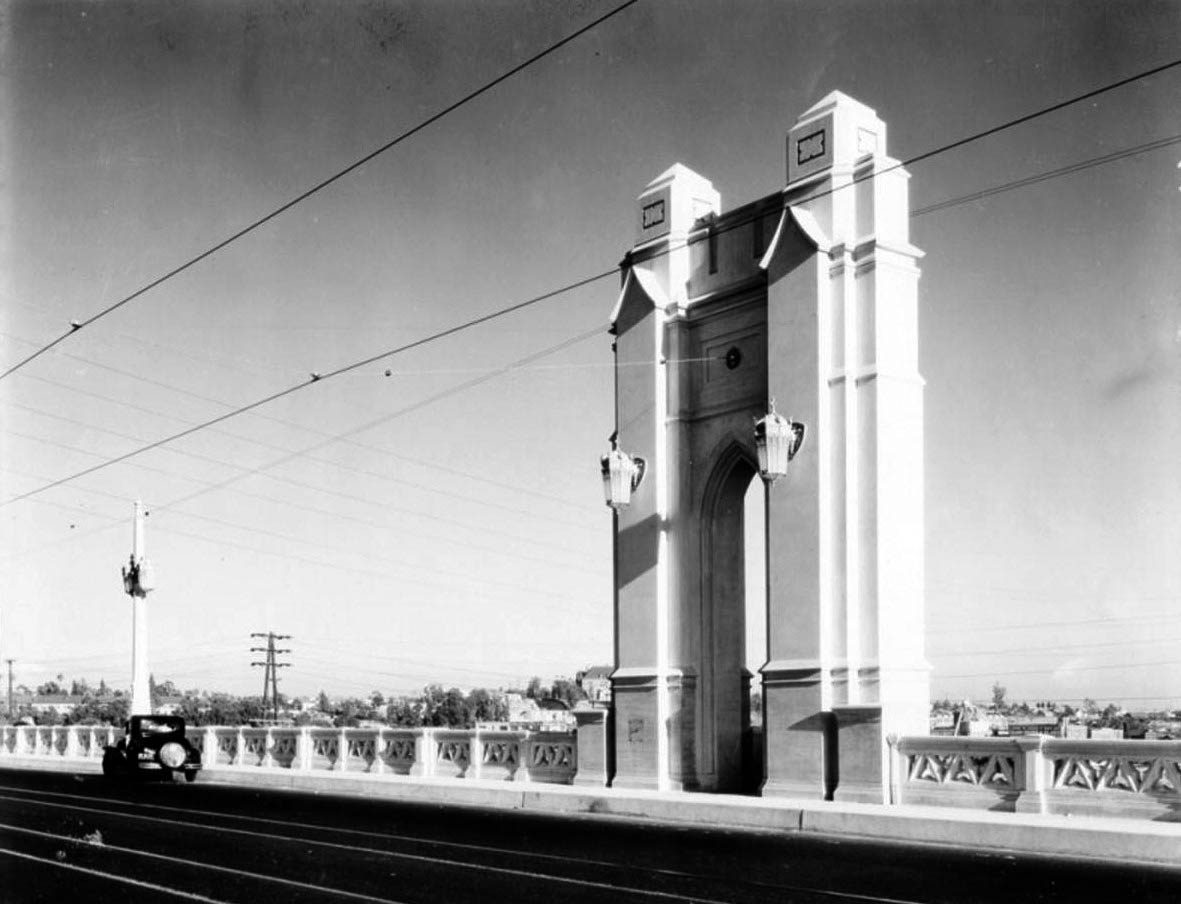 |
|
| (1930s)* – A car drives over the Fourth Strreet Viaduct. Note the beautiful pillars and ornate streetlights on the side of the bridge. Streetcar tracks and overhead wire are also seen. |
Historical Notes From a distance it appears pretty similar to the other downtown bridges (and it is), but it’s one of only two downtown bridges that feature Period Revival design. 4th Street is adorned in Gothic Revival detail. The porticos, lighting standards, and railing are all inspired by Gothic architecture; they feel as if they’ve been lifted from an early European cathedral. The railing is especially beautiful with its triangular “trefoil” pattern. (The other Period Revival bridge is the Cesar Chavez Bridge which is in Spanish Revival style.)* The bridge was retrofitted to contemporary earthquake standards in 1995. The original and retrofit engineering were recognized by the Historic American Engineering Record in 2000. The bridge was declared city of Los Angeles’ Historic Cultural Monument #906 in 2008. |
* * * * * |
|
Other Sections of Interest |
|
Water and Power in Early LA |
|
Newest Additions |
New Search Index |

A new SEARCH INDEX has been added to help navigate through the thousands of topics and images found in our collection. Try it out for a test run.
Click HERE for Search Index |
* * * * * |
< Back
Menu
- Home
- Mission
- Museum
- Major Efforts
- Recent Newsletters
- Historical Op Ed Pieces
- Board Officers and Directors
- Mulholland/McCarthy Service Awards
- Positions on Owens Valley and the City of Los Angeles Issues
- Legislative Positions on
Water Issues
- Legislative Positions on
Energy Issues
- Membership
- Contact Us
- Search Index
© Copyright Water and Power Associates
Layout by Rocket Website Templates